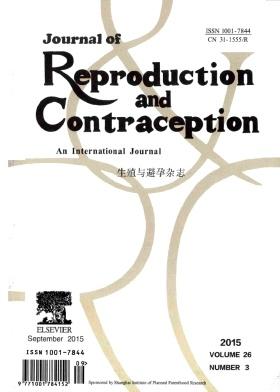Effect of pre-IVF incubation in maturation medium on oocyte maturity, fertilization, embryonic development, and clinical outcomes following embryo transfer
IF 0.7
4区 医学
Q4 OBSTETRICS & GYNECOLOGY
引用次数: 1
Abstract
Objective: Collected human cumulus-oocyte complexes (COCs) are usually inseminated after 4 to 6 hours in in vitro fertilization (IVF) laboratories. The purpose of this study was to determine the effect of short-term pre-IVF incubation in culture medium on subsequent oocyte maturation, fertilization, and embryonic development, as well as clinical outcomes. Methods: Sixty patients were divided randomly into 2 groups, pre-IVF incubation for 5 hours: 1) with (+) the designed oocyte maturation medium; 2) without (−) the designed oocyte maturation medium (transferred directly to fertilization medium for 5 hours before insemination). Oocyte maturation and fertilization were assessed, and the rate of cleavage and good quality embryos were evaluated between the 2 groups on days 2 and 3, respectively. Blastocyst development was based on the remaining number of embryos on day 3, continuously cultured to day 5 after embryo transfer or frozen on day 3, and was compared between the 2 groups. Clinical pregnancy, implantation, and miscarriage rates were also compared. Results: Oocyte maturation rates did not differ between groups (85.8 ± 14.1% vs. 90.7 ± 9.1%). However, the range of oocyte maturation rates (58.3%–100.0%) for each patient was significantly higher in the (−) group than in the (+) pre-incubation group (71.4%–100.0%). There were no differences in fertilization rates (89.9 ± 10.0% vs. 86.5 ± 12.2%) and good quality embryos (70.8 ± 19.1% vs. 62.1 ± 23.7%) between groups; however, the blastocyst development rates were significantly different between groups (73.1 ± 20.1% vs. 58.8 ± 18.2%, P <0.05). Nevertheless, clinical pregnancy (62.5% vs. 61.1%) and implantation (46.9% vs. 47.2%) rates did not differ between groups. Conclusions: These results indicate that a short pre-IVF incubation time in the designed culture medium promotes oocyte maturation and embryonic development, suggesting that short pre-IVF incubation of COCs in the designed culture medium may be important for subsequent final oocyte maturation and early embryonic development.体外受精前在成熟培养基中孵育对卵母细胞成熟、受精、胚胎发育和胚胎移植后临床结果的影响
目的:收集的人类卵丘-卵母细胞复合体(COCs)通常在体外受精(IVF)实验室中4至6小时后进行受精。本研究的目的是确定在培养基中短期预IVF孵育对随后卵母细胞成熟、受精和胚胎发育以及临床结果的影响。方法:60例患者随机分为2组,IVF前孵育5小时:1)用(+)设计的卵母细胞成熟培养基;2) 没有(−)设计的卵母细胞成熟培养基(在受精前直接转移到受精培养基中5小时)。评估卵母细胞成熟和受精,并分别在第2天和第3天评估两组之间的卵裂率和优质胚胎。芽囊发育基于第3天胚胎的剩余数量,在胚胎移植后连续培养至第5天或在第3天冷冻,并在两组之间进行比较。临床妊娠率、植入率和流产率也进行了比较。结果:各组卵母细胞成熟率无差异(85.8 ± 14.1%对90.7 ± 9.1%)。然而,(−)组每位患者的卵母细胞成熟率范围(58.3%–100.0%)显著高于(+)预孵育组(71.4%–100.0%。受精率没有差异(89.9 ± 10.0%对86.5 ± 12.2%)和优质胚胎(70.8 ± 19.1%对62.1 ± 23.7%);然而,各组的胚泡发育率有显著差异(73.1 ± 20.1%对58.8 ± 18.2%,P<0.05)。然而,临床妊娠率(62.5%对61.1%)和植入率(46.9%对47.2%)在各组之间没有差异。结论:这些结果表明,在设计的培养基中短的IVF前孵育时间促进了卵母细胞的成熟和胚胎发育,这表明COCs在设计培养基中的短的IVV前孵育可能对随后的卵母细胞最终成熟和早期胚胎发育很重要。
本文章由计算机程序翻译,如有差异,请以英文原文为准。
求助全文
约1分钟内获得全文
求助全文
来源期刊

Reproductive and Developmental Medicine
OBSTETRICS & GYNECOLOGY-
CiteScore
1.60
自引率
12.50%
发文量
384
审稿时长
23 weeks
 求助内容:
求助内容: 应助结果提醒方式:
应助结果提醒方式:


